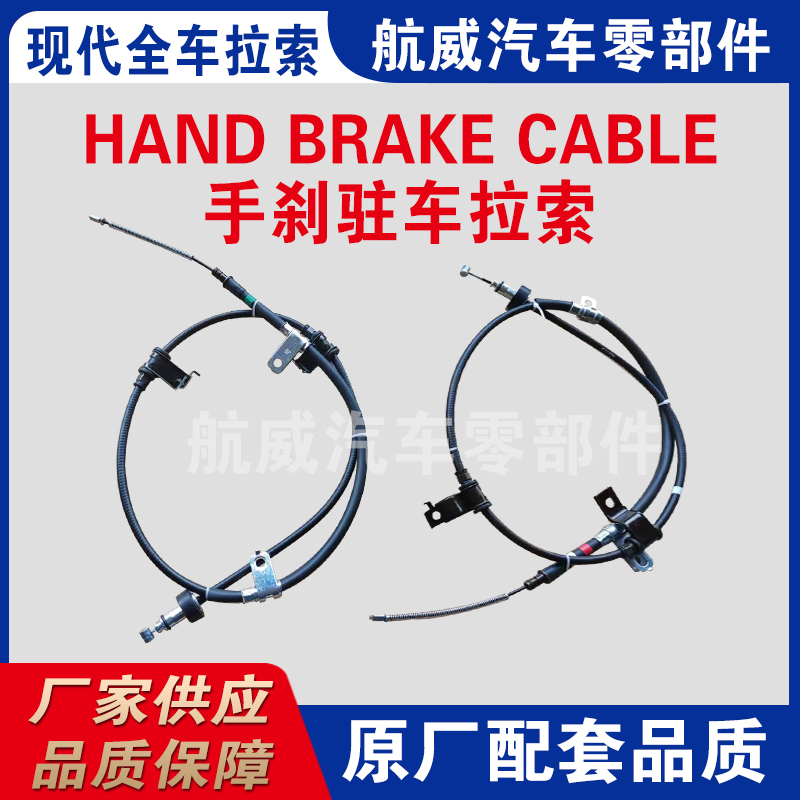push pull throttle cable
Understanding Push-Pull Throttle Cables Mechanisms and Applications
In the world of mechanical engineering and automotive design, the push-pull throttle cable plays a crucial role in controlling various systems. This relatively simple yet effective mechanism can be found in a wide range of applications, from motorcycles and cars to lawnmowers and industrial machinery. Understanding how these cables function and their importance in the overall operation of vehicles and equipment can help in various fields, including automotive repair, design, and maintenance.
What is a Push-Pull Throttle Cable?
A push-pull throttle cable is a flexible conduit that transmits mechanical movements from one component to another. Generally constructed from steel wire encased in a protective plastic or rubber covering, these cables are designed to extend (pull) or retract (push) based on the user's input, usually via a throttle control. The mechanism operates under the principle of pulling one end of the cable while pushing the other, allowing for precise control over throttle response, engine speed, or other functions.
How Does It Work?
When a user rotates the throttle grip or presses a pedal, it exerts force on one end of the cable. The cable transmits this force to a carburetor or fuel injection system, adjusting the flow of air or fuel to the engine. In a typical setup, when the throttle is pulled, the cable extends, which may open a throttle valve, increasing air intake and subsequently boosting engine power. Conversely, when the throttle is released, the cable retracts, closing the valve and reducing power.
The effectiveness of push-pull throttle cables lies in their straightforward design. Their flexibility allows for routing through tight spaces, while their robust construction ensures longevity and reliability. Additionally, the cable design minimizes the risk of failure during operation, a critical factor in automotive and industrial environments.
Applications of Push-Pull Throttle Cables
1. Automotive Industry In vehicles, throttle cables connect the accelerator pedal to the engine’s throttle body, providing drivers with nuanced control over power delivery. With advancements in technology, many modern cars utilize electronic throttle control systems, but push-pull cables remain prevalent in older models and certain specialized vehicles.
2. Motorcycles Similar to cars, motorcycles employ push-pull throttle cables to regulate engine speed. The mechanism must be responsive to ensure safety and performance, as any delay can severely affect handling and acceleration.
push pull throttle cable

3. Marine Applications In boats, throttle cables control engine speed and direction. Given the marine environment's unique challenges, such as exposure to water and salt, these cables are engineered for durability and corrosion resistance.
4. Lawn and Garden Equipment Push-pull throttle cables are commonly found in lawnmowers and other machinery, allowing users to control engine speed and cutting power with ease.
5. Industrial Machinery In many industrial applications, push-pull cables are utilized for controlling valves, conveyors, and other machinery. Their reliability is vital in maintaining the safety and efficiency of operations.
Maintaining Push-Pull Throttle Cables
Like all mechanical components, push-pull throttle cables require regular maintenance to ensure optimal performance. Friction, dirt, and wear can impede their operation, leading to potential safety hazards. Here are some basic maintenance tips
- Regular Inspections Check for signs of wear, fraying, or corrosion. Any damaged cables should be replaced immediately to prevent failure during operation.
- Lubrication Periodic lubrication of the cable can help reduce friction and extend its lifespan. It’s essential, however, to use an appropriate lubricant that won’t attract dirt or degrade the cable material.
- Proper Routing Ensure that the cable is properly routed without sharp bends or kinks that could impede movement. Loose cables can also cause erratic throttle response.
In conclusion, push-pull throttle cables are indispensable components in many mechanical systems, providing a critical link between user input and machine response. Their simplicity in design belies their importance in ensuring smooth and reliable operation across a multitude of applications. Proper understanding and maintenance of these cables can contribute significantly to the performance and safety of vehicles and machinery alike.
-
Workings of Clutch Pipe and Hose SystemsNewsJun.04,2025
-
The Inner Workings of Hand Brake Cable SystemsNewsJun.04,2025
-
The Secrets of Throttle and Accelerator CablesNewsJun.04,2025
-
The Hidden Lifeline of Your Transmission Gear Shift CablesNewsJun.04,2025
-
Demystifying Gear Cables and Shift LinkagesNewsJun.04,2025
-
Decoding Clutch Line Systems A Comprehensive GuideNewsJun.04,2025
